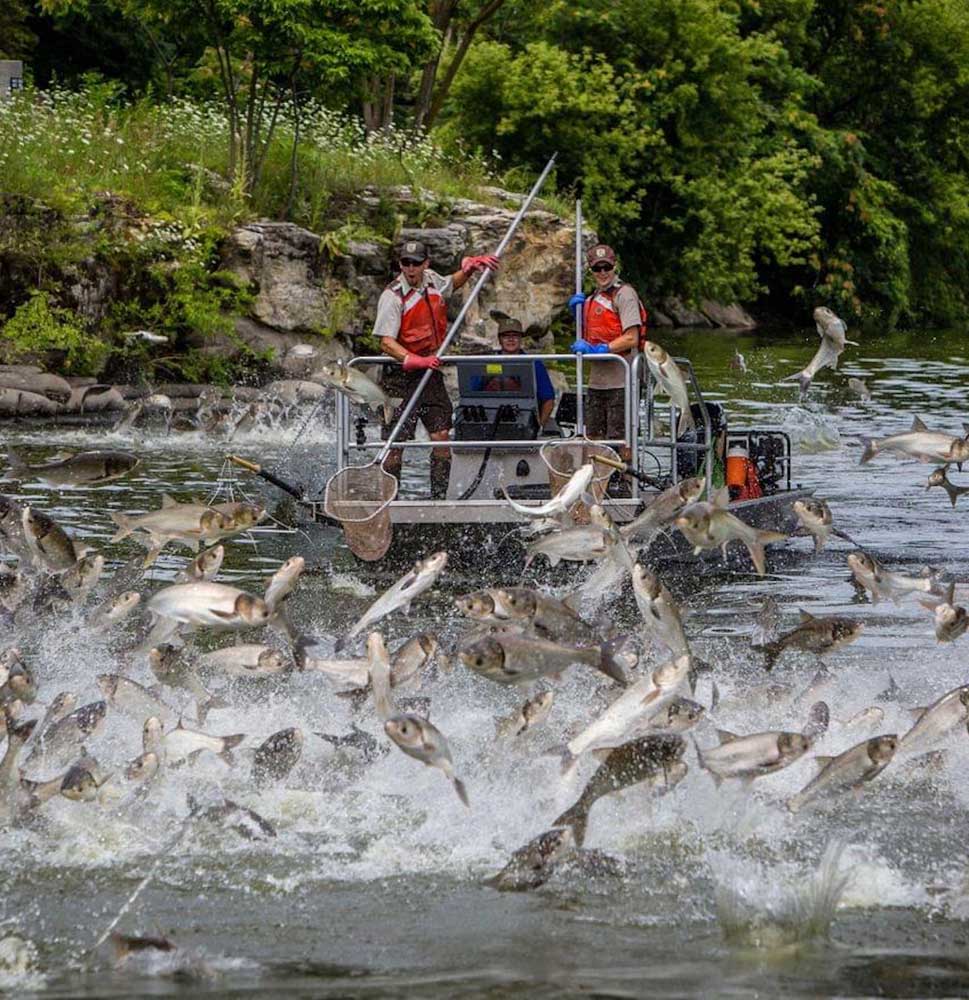High-Flying Problem: Silver Carp Are Located In Texas Waters For The First Time
Published 9:00 am Saturday, August 7, 2021

- Silver Carp were imported into the U.S. in 1973 for use on fish farms, but escaped into public waters within a decade. The first sightings of the fish, which can jump high out of the water like these on the Fox River in Illinois, were reportedly recently in Texas in a tributary of the Red River.
We have all laughed at the videos on the internet of the boaters running down a river using dip nets to catch flying silver carp out of the air as hundreds jump around, over and in a boat.
It might not be quite as funny anymore. Silver carp were recently found in a tributary of the Red River about 15 miles downstream from Lake Texoma by a bowfisherman.
“Bowfishermen frequently target fish in the Red River and tributaries downstream of the Denison Dam. This particular fisherman has observed many silver carp and big head carp in the river and in Choctaw Creek,” said Dan Bennett, Texas Parks and Wildlife Department Inland Fisheries District Supervisor from Pottsboro.
Silver carp and bighead carp, another concerning species, found their way into the United States in 1973. They were imported into the U.S. by fish farms in Arkansas to control phytoplankton, but like every other ill-advised translocation a problem quickly arose. Within a decade some of the fish were showing up on public waters.
“The principal concern is that silver carp are filter feeders and consume a considerable amount of plankton from the water column, which is the primary food for shad and native juvenile fish. So they can have devastating impacts to the health of our existing fish populations,” Bennett explained.
Silver carp can begin spawning at 2 years and continue until 10. Bennett said right now there is concern that the fish will somehow get into Lake Texoma where they can successfully spawn during high spring river flows.
“In addition to harming the fisheries, the presence of 20- to 50-pound fish flying through the air will present a significant safety issue to recreational boaters on the lake,” he added.
While they do not present the same flying danger, bighead carp are also filter feeders that could impact native fish populations. They have already been found in numerous lakes around the state.
Although it does create an entertaining video, silver carp can jump as high as 10 feet out of the water when spooked by things such as boat motors, waterfowl, loud onshore noises or if cornered. On a recreational lake this can be dangerous.
While fishermen have inadvertently moved invasive species like zebra mussels from lake to lake in the past, it is believed the silver carp found their way into Texas through migration upstream from the Red River’s confluence with the Mississippi River. Bennett thinks the passage was made easier by flooding and high flows since 2015.
“None have yet been found in Texoma itself. We have enacted regulations prohibiting the movement of baitfish from below the dam for use in other waterbodies to try and prevent the accidental spread of juvenile fish to the lake,” Bennett said.
TPWD has also been surveying other tributaries and lakes in the Red River watershed to try and determine how far the fish have spread.
“We conducted a survey last month at the new Bois d’Arc Lake along with researchers from Auburn University to determine if either (silver and bighead carp) species had been trapped upstream of the reservoir’s dam before impoundment. Fortunately, we did not observe either species in the lake,” Bennett said.
He added that with fishermen’s diligence, he does not see the fish naturally spreading from where they are now into East Texas tributaries like the Sabine or Trinity. And that is important because there is nothing that can be done otherwise to stop the fish.
Biologists from several states, universities and federal agencies are working together to track the movement of the fish in the U.S., but the truth is there is little that can be done to stop them.
“We believe our most productive efforts are in educating the public about how to identify the fish and get the word out that moving bait from one waterbody to another is prohibited and potentially very harmful,” Bennett said.
TPWD is asking anyone who catches either a silver or bighead carp in state waters to report it along with location information and photos to AquaticInvasives@tpwd.texas.gov. Both species are prohibited exotic species in Texas and must be killed upon possession by beheading, gutting, gill-cutting or other means or placed on ice. Neither species can be possessed live.






